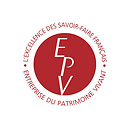Gaston Duchamp, known as Jacques Villon, belongs to a large family of artists. He is the older brother of Marcel Duchamp, and the grandson of the artist Émile Frédéric Nicolle, who introduced him to art. Over a period of almost ten years, from 1922 to 1933, he interpreted in etching some fifty paintings...
Read more
Gaston Duchamp, known as Jacques Villon, belongs to a large family of artists. He is the older brother of Marcel Duchamp, and the grandson of the artist Émile Frédéric Nicolle, who introduced him to art. Over a period of almost ten years, from 1922 to 1933, he interpreted in etching some fifty paintings by great masters such as Matisse, Braque, Picasso, Manet, Renoir and Cézanne. Between 1925 and 1934, the artist sold and sometimes donated some of the etched plates from this series to the Chalcographie du Louvre, which now holds twenty-nine of them.
Jacques Villon's interpretation of Le Déjeuner sur l'herbe (1929), by Édouard Manet (1832-1883), is part of the "Maîtres d'art élèves" scheme run by the Institut pour les Savoir-Faire Français, which in 2022 honored the pairing of Bertrand Dupré, an intaglio printer and engraver, and Lucile Vanstaevel, his pupil. The original painting at the Musée d'Orsay is a major work in the history of art, marked both by its subject and by Manet's style, notably in its treatment of color, nature and light, as well as its lack of perspective and depth.
This is a highly complex print, in four color plates, superimposed by successive passes through the press, which required over two months of research and features some thirty colors. As part of its ongoing research into color, the Atelier de Chalcographie has developed a mastery of its craft, revealing the subtlety of the hues and the rendering of the paint, in order to get as close as possible to the original work.
Aquatint in four plates.
Numbered prints of 20, dated 2024, unsigned.
Close










